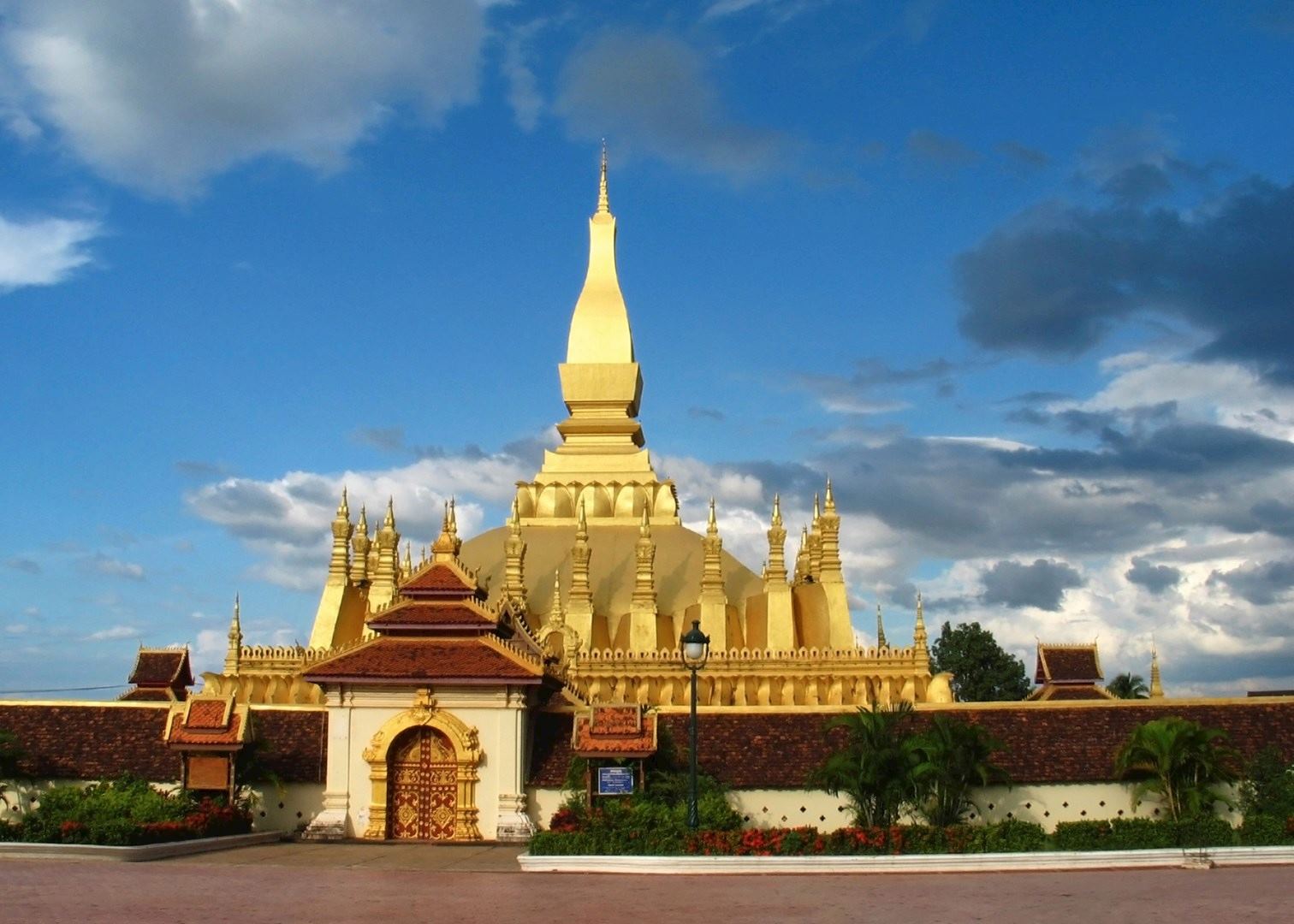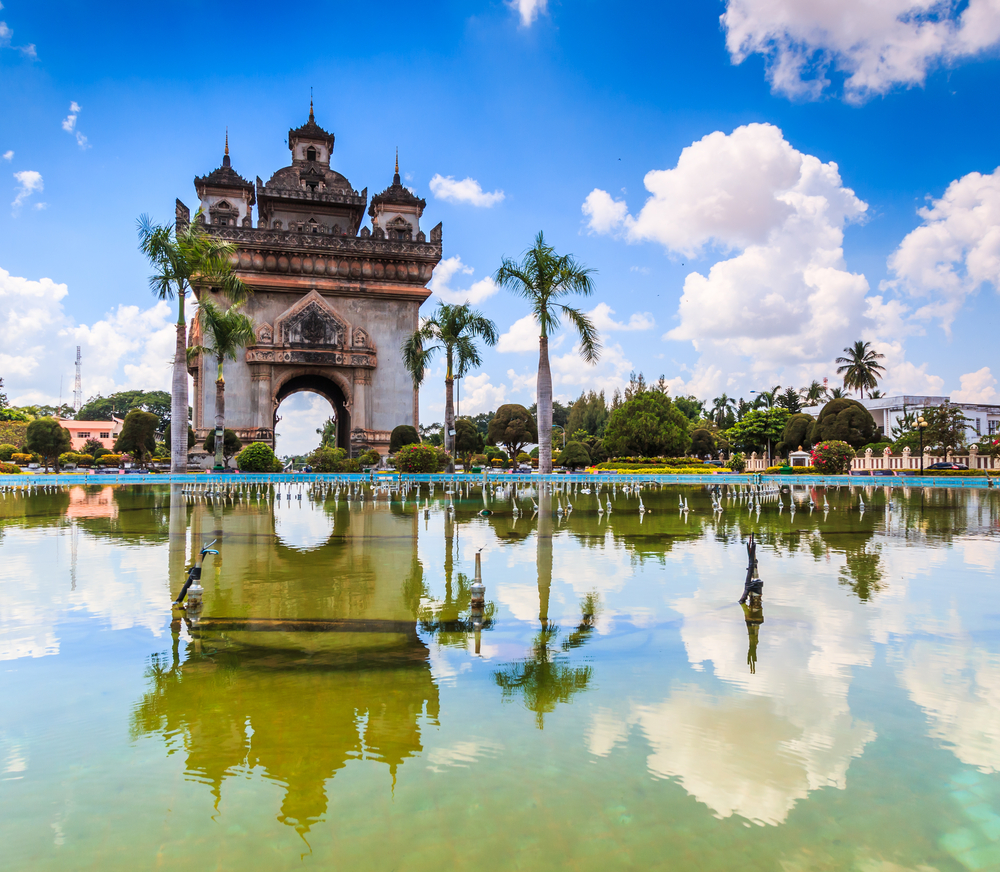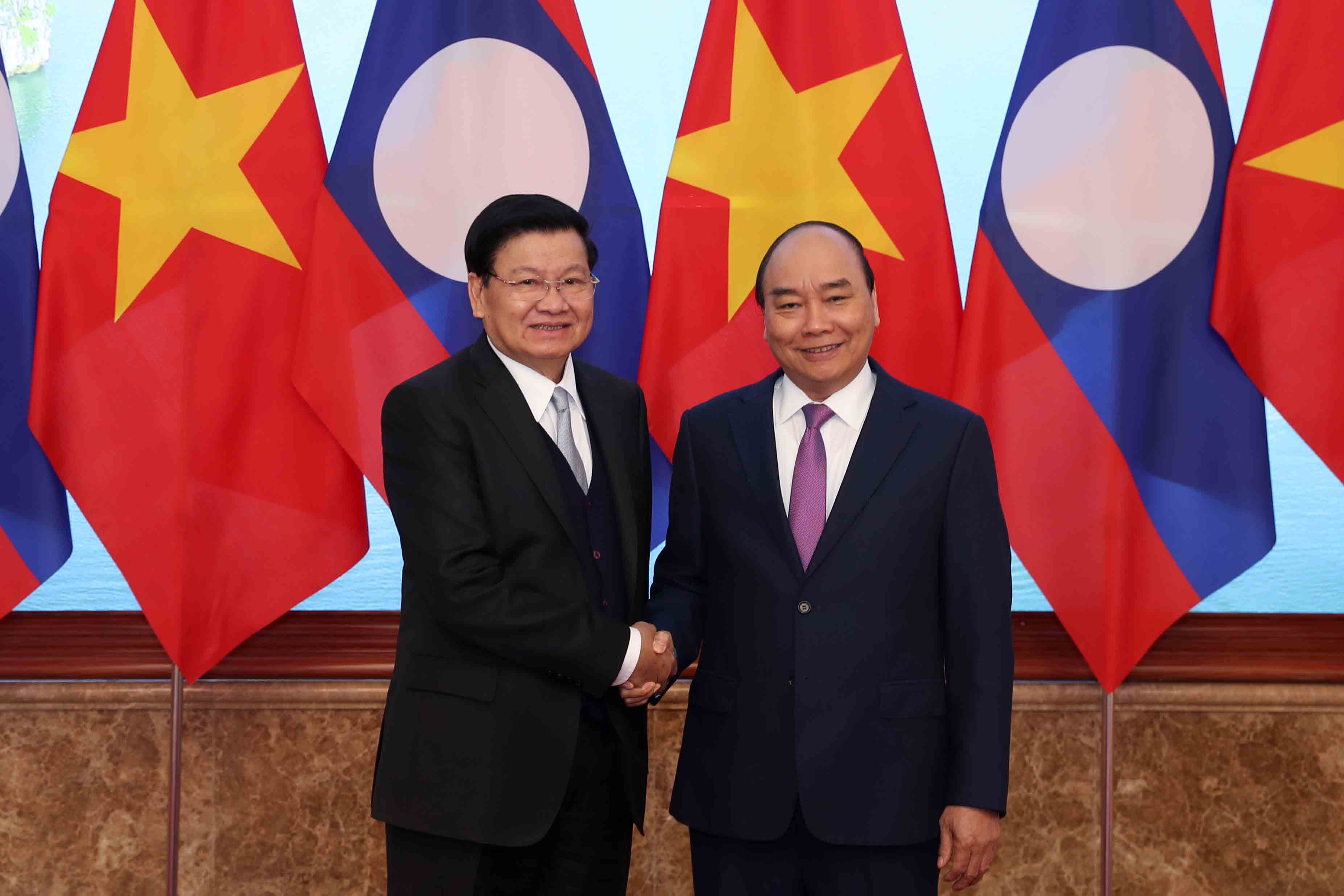Introduction to the Country and People of Laos
The Lao People’s Democratic Republic (Lao: ສາທາລະນະລັດ ປະຊາທິປະໄຕ ປະຊາຊົນລາວ) is a landlocked country in Southeast Asia. Laos is bordered by Myanmar and China to the northwest, Vietnam to the east, Cambodia to the south, and Thailand to the west.
Laos is also known as the “Land of a Million Elephants” or “Lane Xang”; its language is Lao. Historically, Laos was also known as Ai Lao (哀牢) and Lao Qua.
Lao history before the 14th century is linked to the rule of the Nanzhao Kingdom (南詔). In the 14th century, King Fa Ngum ascended the throne and renamed the country Lan Xang (meaning “million elephants”). Over the following centuries, Laos repeatedly fought against invasions from Vietnam, Burma, and Siam.
A Country with Unique Architecture
By the 18th century, Thailand gained control over some remaining principalities. These territories fell within the French sphere of influence in the 19th century and were incorporated into the French Indochinese Union in 1893. During World War II, Japan replaced France in Indochina. After Japan surrendered to the Allies, Laos declared independence on October 12, 1945.
In early 1946, France returned to invade Laos. In 1949, the country came under the leadership of King Sisavang Vong and was named the Kingdom of Laos. In July 1954, France signed the Geneva Accords, recognizing Laos’ independence and territorial integrity.
From 1955 to 1975, the Kingdom of Laos strongly supported the United States in the fight against the expansion of communism in Indochina. Political instability in Vietnam also drew Laos into the Second Indochina War (see also the Secret War) and led to the Lao Civil War and several coups.
From 1968, North Vietnam sent its units to fight alongside the Pathet Lao against the Royal Lao Army. In 1975, the communist Pathet Lao movement overthrew the royal government, executed King Savang Vatthana, and took control of the country. On December 2, 1975, the National Congress of People’s Representatives of Laos decided to abolish the monarchy and establish the Lao People’s Democratic Republic. This day is also celebrated as the National Day of the Lao People’s Democratic Republic.
Laos has been a member of the United Nations since December 14, 1955 (note: this Lao government was the Kingdom of Laos, not the Pathet Lao forces). Diplomatic relations at the ambassadorial level with North Vietnam were established on September 6, 1962.
In the late 1980s, Laos implemented policies to loosen economic controls. In 1997, the country joined the Association of Southeast Asian Nations (ASEAN). Currently, relations with Vietnam remain fundamental to Laos’ foreign policy.
Geography
Laos is a landlocked country in Southeast Asia. The terrain of Laos is mountainous, covered by green forests; the highest peak is Phou Bia at 2,817 meters. The remaining area consists of plains and plateaus. The Mekong River flows along almost the entire western border, adjacent to Thailand, while the Annamite Range runs along the eastern border, adjacent to Vietnam.
The region has a tropical monsoon climate with two distinct seasons: a wet season and a dry season. The wet season lasts from May to November, followed by the dry season from December to April of the following year.
The capital and largest city of Laos is Vientiane. Other major cities include Louang Phrabang, Savannakhet, and Pakse.
Laos is also home to many rare animal species, most notably tigers, elephants, and giant gaurs. Many species are facing the threat of extinction due to poaching and deforestation.
Politics
The sole political party is the Lao People’s Revolutionary Party (LPRP). The Head of State is the President, elected by the National Assembly for a five-year term. The Head of Government is the Prime Minister. The government is nominated by the President and approved by the National Assembly.
Government policy is guided by the Party through its nine-member Politburo and 49-member Central Committee. Important government decisions are approved by vote of the Council of Ministers.
Laos adopted a new constitution in 1991. The following year saw elections for the National Assembly with 85 representatives. National Assembly members are elected by secret ballot. The National Assembly, expanded to 99 representatives in the 1997 election, passed new laws, though the executive branch still retained the power to issue relevant decrees. The most recent election took place in February 2002, with 109 representatives.
Economy
Laos, one of the few remaining communist countries, began dismantling centralized controls and fostering private enterprise development in 1986. The results, from a low starting point, have been impressive. The average annual growth rate was 7% from 1988-2001, except for a period of decline due to the Asian financial crisis beginning in 1997.
Despite its high growth rate, Laos remains a country with underdeveloped infrastructure. There is a railway line connecting the capital Vientiane (Laos) to the Nong Khai area (Thailand), and although the road system has been improved, travel remains difficult. Domestic and international telecommunications are limited, and household electricity is only available in some urban areas.
Agriculture accounts for approximately half of the Gross Domestic Product (GDP) and employs 80% of the workforce. The economy continues to receive assistance from the International Monetary Fund (IMF) and other international sources, as well as from foreign investment in agricultural processing and mining.
Administration
Laos applies a four-tier administrative system comprising a central level and three local levels. The highest local level is the province, with 17 units and Vientiane Prefecture. The second local level comprises districts and towns. The lowest local level consists of communes.
Cities: Vientiane (capital), Luang Prabang
Towns: Attopeu, Ban Houayxay, Bounneua, Hat Dokeo, Luang Namtha, Nam Thane, Napheng, Oudomxay, Paklay, Pakse, Paksong, Phongsali, Phonhong, Phonsavan, Salavan, Savannakhet, Sayaboury, Seno, Thakhek, Thangone, Vang Vieng, Viengsay.
Demographics
Approximately 60% of the population is ethnically Lao in the narrow sense, the dominant political and cultural group living in lowland areas. The Lao people originated from Tai migrants who moved south from China around the 1st millennium BCE. 8% of the population belongs to other lowland ethnic groups, who, along with the Lao, are collectively known as Lao Loum.
Highland ethnic groups include the Hmong, Dao (Yao or Mien), Black Tai, Shan, and a few Tibeto-Burmese people, living in isolated areas of Laos. These highland tribes have a mixed ethno-linguistic heritage in northern Laos. Generally, they are known as Lao Soung or highland Lao.
The central and southern mountainous regions are home to Mon-Khmer ethnic tribes, known as Lao Theung. There are a small number of people of Vietnamese origin, mainly in urban areas, but many left after Laos gained independence in the late 1940s and after 1975.
The term “Lao” does not necessarily refer to the Lao language, ethnicity, or customs; rather, it carries a more political meaning. It can encompass non-ethnic Lao people who live in Laos and are Lao citizens. Similarly, the word “Lao” can refer to the people, language, culture, and cuisine of ethnic Lao people living in northeastern Thailand (Isan).
The main religion is Theravada Buddhism, alongside animistic worship common among mountain tribes, where spirit worship coexists peacefully. There are a small number of Christians and Muslims.
The official and dominant language is Lao, a dialect of the Tai language group. People in the central and highland regions of Laos speak their tribal languages.
Culture
Lao culture is heavily influenced by Theravada Buddhism. This influence is reflected in Lao language and art, literature, and performing arts.
Music
Lao music is greatly influenced by traditional instruments such as the khene (a type of bamboo mouth organ). A typical mor lam ensemble includes a khene player (mor khaen) along with dance performances by other artists. Lam Saravane is the most popular genre of Lao music; Lao people in Thailand have developed and popularized a widely known style called mor lam sing.
Festivals
Festivals in Laos are often called Bun. The true meaning of Bun is merit. To “make Bun” means to perform meritorious deeds to gain merit. Like other countries in Southeast Asia, festivals in Laos are divided into two parts: rituals and celebrations. Laos is a land of festivals, with something happening every month of the year. There are four annual New Year celebrations: the Gregorian New Year, the Lunar New Year (as in some East Asian countries), Lao New Year (Bun Pi May) in April, and Hmong New Year in December.
Other festivals include: Bun PhaVet (Buddha’s Incarnation) in January; Bun VisakhaPuya (Buddha’s Birthday) in April; Bun BangPhay (Rocket Festival) in May; Bun Khao PhanSa (Buddhist Lent) in July; Bun Khao Padapdin (remembrance of the deceased) in September; and Bun Suanghua (boat racing) in October.
Cuisine
Lao cuisine shares similarities with its neighboring countries, Cambodia and Thailand: spicy, sour, and sweet. However, Lao cuisine also possesses distinct characteristics of its own.
Transportation
Transportation in Laos is considered relatively good, with very convenient transport in major cities. People in the capital region mostly use cars due to low import prices and government officials being provided with vehicles, leading to a large number of four-wheeled vehicles in major cities. Motorcycles are very rare and bicycles are seldom seen even in the capital.
Most roads are two-way. At intersections, green lights are for one direction and do not allow opposing traffic to proceed. Pedestrian and vehicle lights are also one-directional.
Lao people are very respectful of traffic laws; there is no incessant honking, and traffic jams are very rare.
Tourism in Laos
Tourism in Laos focuses on its culture and natural scenery, with pristine mountainous regions and peaceful rural areas.
Lao tourism is divided into 7 main regions: Vientiane, Xiengkhoang, Luang Phabang, Thakhek, Savannakhet, Pakse, and Champasak. Tourist attractions within these 7 regions include:
Vientiane: Laos is a land of pagodas, with a total of 1,400 temples. Therefore, it is famous for sights such as That Luang and Wat Phra Keo, Wat Ong Teu, Wat Si Muang, Wat Sisaket, and the Buddha Park (Suon Xieng Khouan) (also known as Suon Phut, or Garden of Buddhas), a complex of hundreds of statues cast according to Buddhist tales, located in Tha Duea, about 25 km from Vientiane, near the Lao-Thai Friendship Bridge.
In Vientiane, there is a rather magnificent Vietnamese temple named Bang Long. From the morning market on Lan Xang Avenue, one can see the towering Anou Savary monument (Monument to the Unknown Soldier), renamed Patuxay (Victory Arch) after 1975, located in a roundabout at the boundary between Vientiane city and the That Luang area. Anou Savary was built in 1958, with its lower and outer parts modeled after the Arc de Triomphe in Paris, while the upper and inner parts feature distinctive Lao architecture and reliefs. From the highest level of Anou Savary, one can see a panoramic view of Vientiane.
The main thoroughfare in Vientiane is Si Muang-Samsenthay Road, a bustling and prosperous street bearing the architectural imprints of French colonialism, running through That Khao to the central O-Dien – SengLao area, out to Si Khay – Wattay, then suddenly stopping to give way to traditional Lao architecture: stilt houses.
Vientiane slopes gently along the Mekong River. On the other side of the river is Nong Khai province (Thailand). In 1994, the Australian government funded the construction of the Lao-Thai Friendship Bridge across this stretch of the river, measuring 1240m long. Thanks to this bridge, a new direction for tourism between the two countries has opened up, connecting the East-West economic corridor and fostering tourism development for all three Indochinese countries.
The Vientiane riverside has not been fully exploited, mainly focusing on food stalls and informal eateries. The street food stalls along the Vientiane riverside offer a diverse range of food, with many delicious and unique dishes.


